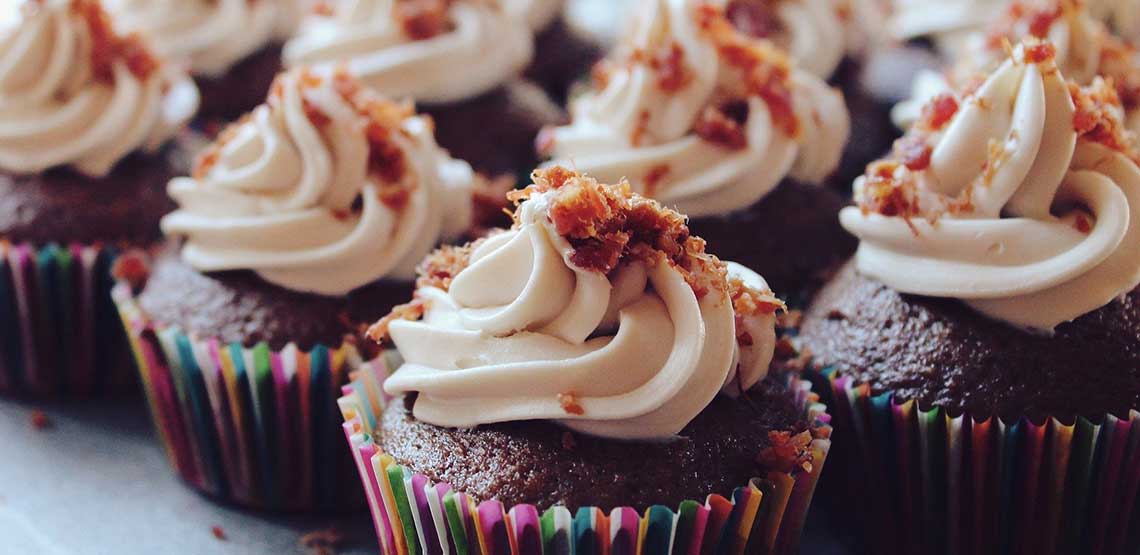Foods to Avoid with Type Two Diabetes
As a diabetes educator, I like to point out to my patients that there are no foods that are truly off-limits. Are there foods that have less merit, or less nutritional value? Certainly. Are there foods that will be better for your blood sugar levels? Absolutely.
Does this mean that you can’t have a slice of cake every now and then? No way. It might seem like there are lots of foods to avoid with type two diabetes, but there are still ways you can enjoy having treats, too.
If you’re looking to cut back on certain foods and beverages that may have less nutritional value, don't get stressed; it's easier than you think.
Juices
Juice may seem like it would be a healthy option; after all, it is derived from fruit. However, juice contains a concentrated form carbohydrate; this means that only a small serving of juice is needed in order to equal an equivalent serving of fruit. This makes it easy to overdo it on juice.
Juice does have its merits: it may be rich in nutrients, such as vitamin C. However, it is lacking in fiber. Most healthcare providers agree that it is better to consume a serving of fruit rather than a serving of juice.
Alternative Option
Try a serving of fruit instead! If you’re searching for a beverage, seek out water or sparkling water (for some added taste). For a flavoring punch, choose flavored sparkling water, or flavor it yourself with a slice of orange, strawberries, or a sprig of mint.
Sodas
Much like fruit juice, soda is comprised of liquid that is concentrated with sugar. A small serving (approximately 4 ounces) is one serving of carbohydrates. Take into consideration how much is consumed at one time – perhaps you drink a can, a large fountain beverage, or a tall glass. It can add up quickly.
Unlike fruit juice, soda doesn’t have any merits. While fruit juice at least has nutrients, soda is completely empty of anything besides sugar and calories.
Alternative Option
Again, water is the best choice. Fill a water bottle and carry it with you so you’re not tempted to pick up a soda when thirst strikes. If you’re having a hard time drinking water, you can flavor it with items such as Crystal Light or Mio. Again, you can flavor it with fruit; there are endless options. There are also many non-caloric sparkling waters and diet beverages, and even diet soda.
Fruit
I’m sure you’re thinking, “Wait, you just said to eat fruit instead of drinking juice a few paragraphs above." Yes, but hear me out!
One of the biggest misconceptions that I hear is that fruit is a “health" food and that it can be eaten in unlimited quantities. This, unfortunately, might not always be true.
Truthfully, fruit is a carbohydrate. This means that it should be eaten in varying quantities based on your meal plan. This does not mean that it needs to be eliminated.
According to M. Regina Castro, M.D. at Mayo Clinic, “The advantage of eating a low-carbohydrate fruit is that you can consume a larger portion." Theoretically, you could eat larger servings of certain fruits because they are larger volumes per carbohydrate serving.
Alternative Options
You don’t need to cut out fruit. You just need to be mindful of your serving sizes. Perhaps choose one serving per meal or snack, or if you must have more than one serving, discuss how many carbohydrate servings you should be eating with a dietitian and “fit" the servings into your meal plan.
An example of a single carbohydrate serving is:
- ½ banana
- 1 cup blackberries
- ¾ cup blueberries
- 1 cup raspberries
- 1 ¼ cup strawberries
- 1 cup of chopped melon
Desserts
It goes without saying that most desserts, such as ice cream, cakes, and donuts, are chock-full of carbohydrates. They are made with ingredients such as flour, white sugar, and brown sugar, all of which are carbohydrates.
Alternative Options
Many people choose to eat a serving of their favorite dessert daily. They simply find a way to add it into their meal plan by limiting other carbohydrates and eating a small portion of the dessert. Others choose to save a dessert for a special occasion, such as a holiday or a birthday. The choice is yours, but it does not need to be eliminated completely.
Should you want to find a “healthier" swap, you can find cookbooks and recipes on the internet that use alternatives to cut back on carbohydrates and total grams of fat.
Final Notes
While it is important to watch what you eat, this doesn’t mean that certain items need to be cut out of your diet entirely. There is no need to totally restrict yourself; instead, be mindful of what you’re eating, practice portion control, and be sure to speak with a dietitian or your healthcare professional if you have questions or concerns.


